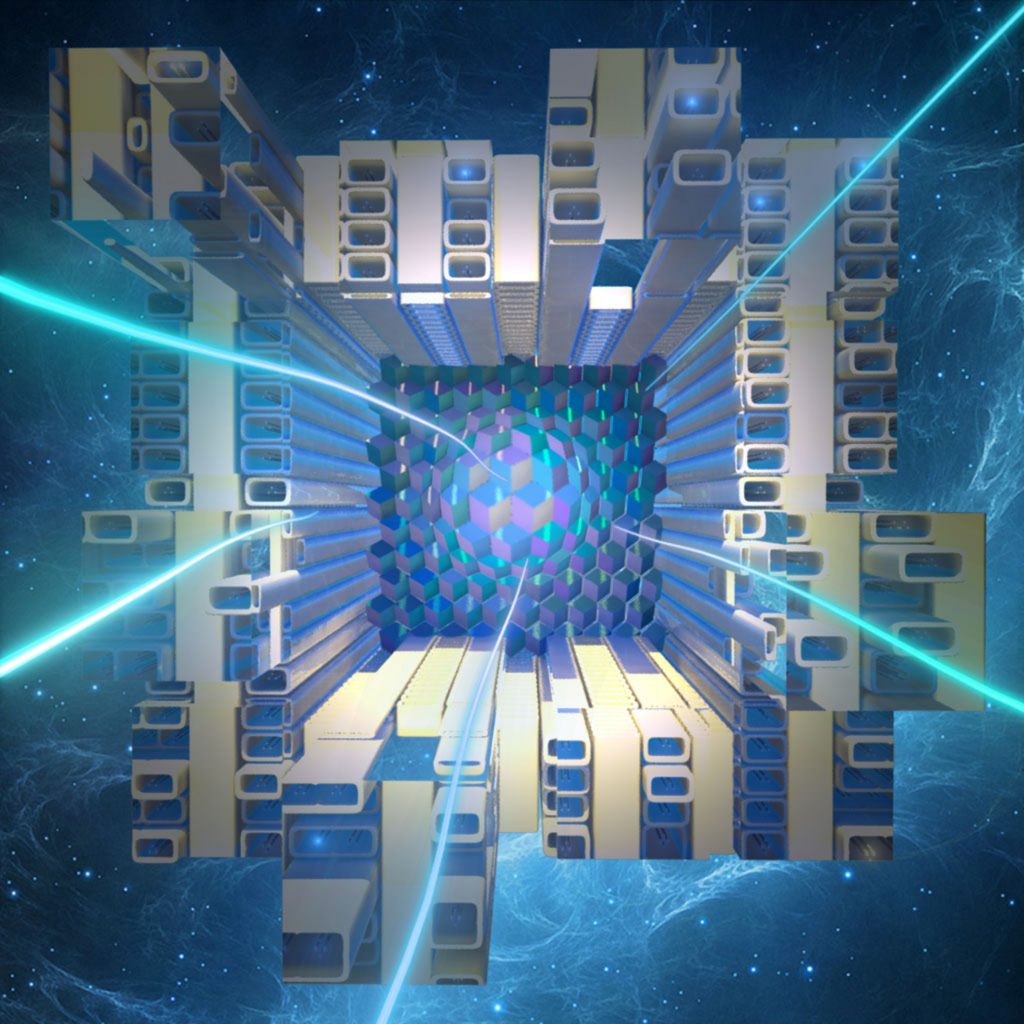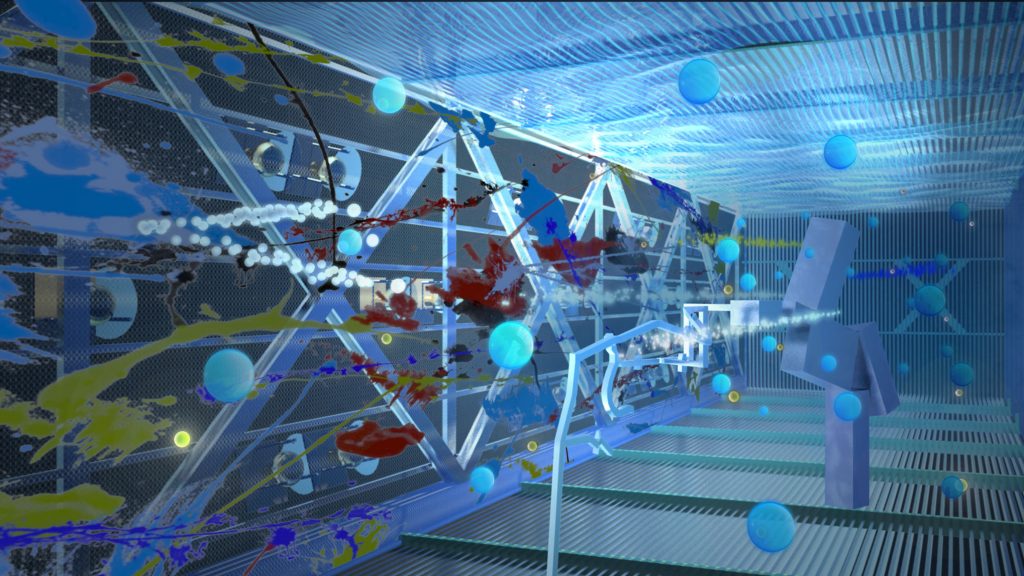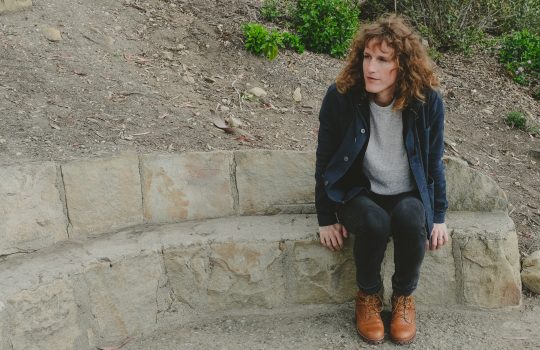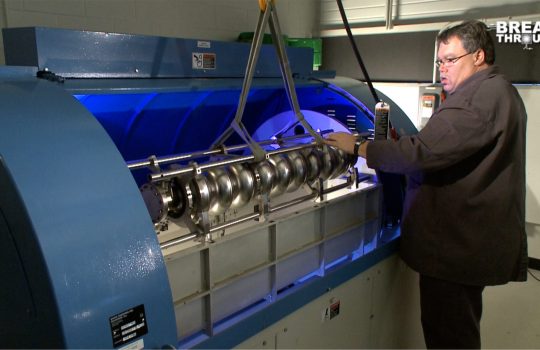Far beyond the realm of the visible, trillions of neutrinos rush through us every second and leave without a trace. Even large instruments for detecting these elusive particles have to be built with incredible sensitivity to be able to see them.
Visualizing neutrinos was the challenge Ellen Sandor, a Chicago new-media artist and director of (art)n, and her team, Chris Kemp and Diana Torres, faced when she became Fermilab’s 2016 artist-in-residence.
In her exhibit “Neutrinos in a New Light,” currently on display in the Fermilab Art Gallery, Sandor’s 3-D PHSColograms offer a new perspective on neutrinos and their detection in Fermilab’s various experiments. Sandor’s trademarked PHSColograms display abstract digital art while creating the illusion of depth, similar to a hologram.
In one of her works, Sandor shows how Fermilab’s NOvA experiment measures neutrino traces left in NOvA’s detector. Sandor says she visualized the neutrinos data as a grid, inspired by op-art artist Victor Vasarely, of colors and shapes in the center of a so-called projection mapping of the detector.
Sandor also created a virtual-reality interior of the detector for Fermilab’s MicroBooNE experiment. During scheduled tours of the exhibit, visitors can virtually submerge themselves in it, collide neutrinos with the material inside the detector, and see the resulting traces depicted as brush strokes or constructed sculptures.
“We could even include a little art history: The paint brush strokes and sculptures are inspired by works of Jackson Pollock and David Smith,” Sandor said. The work of both American artists happens to be contemporary with discovery of neutrinos in 1956.

Sandor’s PHSCologram “Neutrinos and NOvA: A Vasarely Variation” captures the inner workings and produced data of the Fermilab neutrino detector NOvA. Image: (art)n
Science on display
Sandor’s residency work was a response to a request: Could she and her team create compelling art pieces on neutrinos and neutrino research at Fermilab?
“We didn’t know anything about neutrinos when we accepted the residency,” Sandor said. “But we already had experience in visualizing the invisible – we visualized mathematical fractal maps in 4-D PHSColograms back in the 1980s. So we decided: Let’s learn about neutrinos.”
The first steps in her journey to learn more about the mysterious particles brought her deep underground, where she came face-to-face with Fermilab’s large neutrino detectors. She also met with experts to discuss neutrinos and their ghostly behavior in detectors.
Neutrinos are known for how little they interact with matter. They can pass through light-years of lead before striking a lead atom. And they could hold the clue to why, early in the universe’s formation, matter dominated over antimatter, leading to the bigger question of why we’re here at all.
“We wanted our art to be 100 percent scientifically correct, but we also wanted to use metaphors,” Sandor said. “So we made sure that we got feedback from the scientists during the whole creation process.”
One of her more metaphoric works, “Allies for Antineutrinos,” illustrates an international agreement to monitor antineutrinos created in nuclear reactors as two hands holding each other and releasing the particles. The piece is based on the work of the International Atomic Energy Agency, a watchdog for countries using nuclear power. One of its goals is to measure antineutrino levels next to nuclear reactors.
Fermilab physicists helped Sandor in her presentation of the science and were open to her artistic visualization of their work. Her goal, in turn, was to allow scientists to see their work in a new light.
“When I started the artist-in-residence program, I thought that this would be great for the artist,” said Georgia Schwender, curator of the Fermilab Art Gallery. “What I didn’t realize then was how important it also is to the scientists.”
Sam Zeller, co-spokesperson for Fermilab’s MicroBooNE neutrino experiment, said she was able to see her own neutrino detector and how it functions in a very different light thanks to Sandor’s artwork. But she was even more interested to see how others interacted with the art pieces since she had been part of Sandor’s process as one of her scientific advisors.
“The most impressive part for me was that no idea was too big for Ellen,” Zeller said. “Working with (art)n was much like working in particle physics: You dream up a bold new idea, brainstorm on how you could possibly pull it off – often changing directions as you go – and then you do it.”
“Neutrinos in a New Light” will be on display until March 17. The virtual-reality exhibit of the MicroBooNE detector is accessible only during scheduled tours. You can take tours of the exhibit on Jan. 14, Feb. 18 and March 11 from 10 a.m.-noon.




